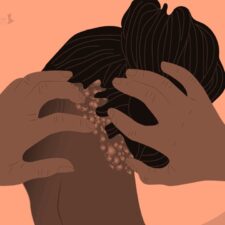
If you’ve ever struggled with migraines, you know it’s more than just a bad headache. It’s debilitating. The throbbing pain, sensitivity to light, nausea, and brain fog can make even the simplest task feel impossible. For many, the only relief comes in the form of strong medications — but what if there were a gentler, more natural path to healing?
Let’s talk about Tai Chi and Qigong — two ancient Chinese mind-body practices that quietly changed lives. They’re slow, flowing movements rooted in breath and intention, and for many people, they’ve become a source of relief, not just for migraines but for chronic stress, anxiety, and overall health.
And the best part? First, you don’t have to be “in shape,” flexible, or spiritually enlightened. You have to show up for your body.
RELATED: Tai Chi vs. Yoga: Which One is Better For Strength?
How Tai Chi and Qigong Work to Reduce Stress and Pain
Let’s start with the basics. Tai Chi (pronounced tie-chee) and Qigong (chee-gong) are both traditional Chinese practices designed to balance energy (qi) in the body, reduce stress, and promote physical and emotional well-being.
They both combine:
- Gentle movements
- Deep, controlled breathing
- Mindfulness and meditation
- Energy cultivation (Qi)
Where Tai Chi is often more structured, with set forms and sequences, Qigong is more free-flowing and meditative. But they both help you reconnect with your body in a deeply healing way.
So, how do they help with migraines?
They calm the nervous system.
When stressed, your sympathetic nervous system (the fight-or-flight system) stays activated. This can trigger migraines in people who are already sensitive to changes in stress hormones or muscle tension. Tai Chi and Qigong activate the parasympathetic nervous system, which calms, restores, and regulates your body’s systems.
They reduce inflammation.
Chronic stress leads to chronic inflammation, which has been linked to migraines. Studies show that mind-body practices like Qigong can lower inflammatory markers in the blood.
They ease muscle tension.
Many migraine sufferers carry tension in their neck, shoulders, and jaw. The flowing, low-impact movements in Tai Chi and Qigong help release that tension, without triggering more pain.
This isn’t about pushing or punishing the body. It’s about listening, slowing down, and letting your body lead.
The Scientific Research Behind These Mind-Body Practices
A growing body of research confirms what millions have already experienced: Tai Chi and Qigong offer real, measurable relief.
A 2022 study published in Headache: The Journal of Head and Face Pain found that participants who practiced Tai Chi for 12 weeks had significantly fewer migraine days per month than a control group. The effect was similar to first-line medication treatments.
Another 2019 study from The Journal of Pain showed that Qigong practice reduced the intensity and frequency of chronic pain, including headaches, and improved participants’ quality of life.
Tai Chi has even been shown to improve sleep, lower cortisol levels, and reduce anxiety and depression — all of which are major triggers for migraines.
What’s especially powerful is that these practices are gentle and accessible, especially for Black and Brown folks who have historically been left out of mainstream wellness spaces or discouraged from seeking non-Western healing paths.
RELATED: What Is Causing Your Migraines (and How to Manage and Treat Them)?

Easy Tai Chi Moves You Can Try Right Now for Migraine Relief
You don’t need to join a fancy class to get started. You can do a few simple Tai Chi moves right now, even sitting down.
1. Opening the Heart
This movement helps release chest and shoulder tension and encourages deep breathing.
How to do it:
- Stand or sit with your feet flat and your spine tall.
- As you inhale, bring your arms wide, opening through the chest.
- As you exhale, bring your hands together in front of your heart.
- Repeat slowly 5–10 times, syncing breath with movement.
2. Wave Hands Like Clouds
A soothing movement that encourages fluidity, balance, and relaxation.
How to do it:
- With knees slightly bent, shift your weight gently from side to side.
- Let one hand float across your body at shoulder height, like it’s gliding through water.
- Alternate hands, breathing deeply and moving slowly for 1–2 minutes.
3. Standing Still (Wu Ji)
This is a meditative standing posture to calm the nervous system.
How to do it:
- Stand with feet shoulder-width apart.
- Let your arms rest gently at your sides, or place your hands on your lower belly.
- Soften your gaze or close your eyes.
- Breathe deeply for 3–5 minutes.
Let yourself move intuitively. There’s no “wrong” way to breathe and reconnect.

The Best Qigong Exercises for Relaxation and Wellness
Qigong is often called the “mother of Tai Chi,” and it’s one of the oldest healing practices in the world. If you’re new to it, here are some gentle exercises to explore:
The Inner Smile
This practice invites compassion toward yourself — a beautiful thing if you’re frustrated with your body.
How to do it:
- Sit quietly. Close your eyes and bring your attention to your heart.
- Imagine a warm, gentle smile spreading across your chest.
- Let that smile radiate through your body — your head, shoulders, even your liver (where traditional Chinese medicine says we store stress).
Take a few minutes to breathe and feel that warmth. You deserve it.
Qigong Neck Rolls
These help release the neck tension that often triggers migraines.
How to do it:
- Sit tall. Inhale gently.
- On the exhale, lower your right ear to your right shoulder.
- Roll your chin slowly across your chest to the left shoulder, then back to the center.
- Move slowly, syncing with your breath.
Holding the Ball
A grounding movement for calm and energy balance.
How to do it:
- Stand or sit tall.
- Imagine holding a beach ball between your hands at chest level.
- Inhale and expand your arms like the ball is growing.
- Exhale and return to the original position.
- Breathe through this for 1–2 minutes.
You can find beautiful, beginner-friendly routines from instructors like Lee Holden on YouTube or the Qigong Institute.
Can These Practices Replace Medications? What Experts Say
Let’s be honest. Migraines are complex. There’s no one-size-fits-all cure, and no shame in needing medication. Tai Chi and Qigong aren’t about replacing medical care. They’re about adding tools to your healing toolkit.
Experts say these practices work best when integrated with a holistic care plan.
What neurologists say:
Dr. Niushen Zhang, a headache specialist at Stanford University, told Healthline, “Tai Chi and Qigong have promising research and can be particularly helpful for patients seeking non-pharmaceutical options or sensitive to medication side effects.”
What traditional healers say:
In traditional Chinese medicine, migraines are often seen as an energy blockage (qi). Qigong and Tai Chi are tools to restore balance. Practitioners emphasize daily consistency and intentional breathwork as key for long-term relief.
Listening to Your Body with Compassion
If you’ve been living with migraines — or just trying to reconnect with your body after years of pain, stress, or burnout — Tai Chi and Qigong offer a different kind of healing. Not just “get better fast,” but come home to yourself slowly, breath by breath.
You don’t need to be perfect. You don’t need to know all the moves. You need a few quiet moments and a willingness to listen inward.









